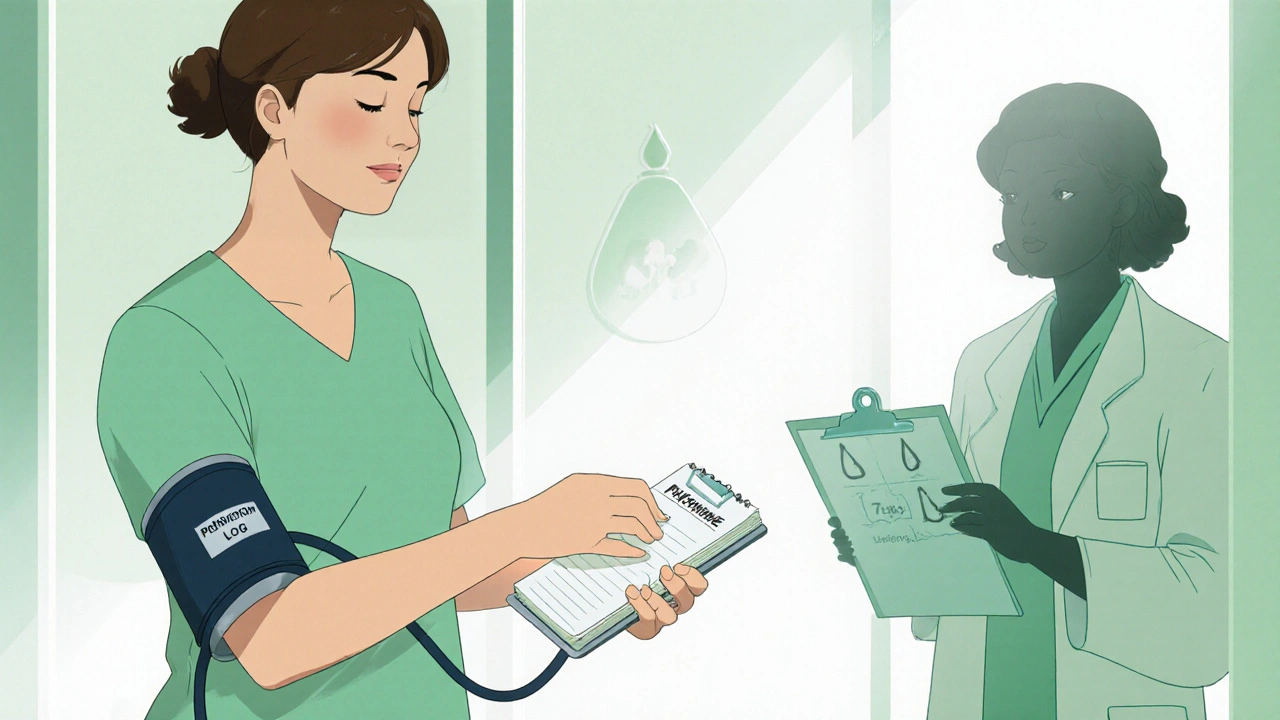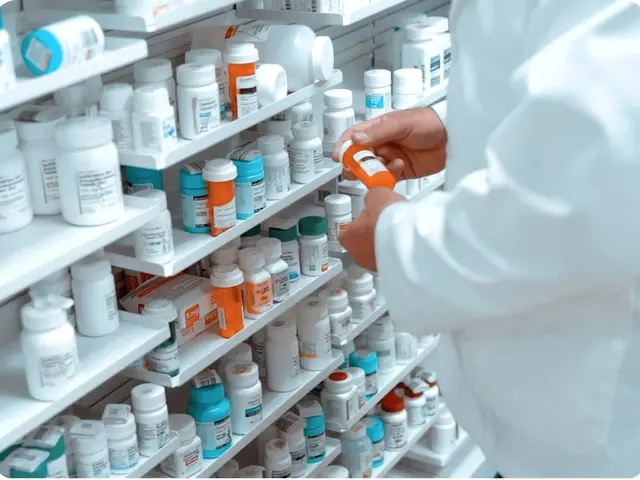Eplerenone Potassium Risk Calculator
How This Tool Works
This calculator estimates your risk of elevated potassium levels (hyperkalemia) when taking eplerenone, considering factors that change during menopause. Results are based on FDA guidelines and clinical studies.
*Note: This is a screening tool only. Always consult your doctor for medical advice.
Quick Takeaways
- Eplerenone is a selective mineralocorticoid receptor antagonist approved for hypertension and heart failure.
- Menopause changes hormone levels, which can affect blood pressure and electrolyte balance.
- While not a standard menopause treatment, eplerenone may help women with hypertension or fluid retention during this transition.
- Typical adult dose starts at 25mg once daily; doctors adjust based on kidney function and potassium levels.
- Common side effects include elevated potassium, dizziness, and renal changes; regular lab monitoring is essential.
What is Eplerenone a selective mineralocorticoid receptor antagonist?
Eplerenone blocks the action of aldosterone, a hormone that tells the kidneys to retain sodium and water while excreting potassium. By inhibiting this pathway, the drug helps lower blood pressure and reduces fluid buildup in conditions like heart failure.
It was first approved by the FDA in 2002 for post‑myocardial infarction patients with left‑ventricular dysfunction, and later for hypertension. Compared with older drugs such as spironolactone, eplerenone is more selective, which means fewer hormonal side effects like breast tenderness or menstrual irregularities.
How Menopause Affects Blood Pressure and Electrolytes
When estrogen levels drop during menopause, blood vessels become less flexible, and the sympathetic nervous system can become more active. Both factors often lead to a modest rise in systolic blood pressure. At the same time, progesterone’s decline reduces its natural diuretic effect, which can cause the body to retain more fluid.
For many women, these changes manifest as occasional swelling of the ankles, higher blood pressure readings, or new‑onset hypertension. The kidney’s ability to regulate potassium also shifts, making electrolyte monitoring more important.
Why Some Women Consider Eplerenone During Menopause
- Hypertension control: If lifestyle changes and first‑line antihypertensives aren’t enough, eplerenone offers a different mechanism of action that can complement existing therapy.
- Fluid retention: Women who experience noticeable leg swelling or nocturnal shortness of breath may benefit from the drug’s diuretic‑like effect.
- Heart‑failure risk: Post‑menopausal women have a higher incidence of heart failure; eplerenone has proven mortality benefits in this group.
It’s not a hormone replacement therapy (HRT) and does not address hot flashes or vaginal dryness. Instead, it targets the cardiovascular side effects that can accompany menopause.

Dosage and Administration
The usual starting dose for adults is 25mg taken once daily with or without food. Depending on blood pressure response and lab results, doctors may increase the dose to 50mg or 100mg per day.
Key points to remember:
- Take the medication at the same time each day to maintain stable blood levels.
- If you have chronic kidney disease (CKD), the starting dose may be reduced to 12.5mg.
- Never double the dose to make up for a missed pill; just resume the regular schedule.
Regular monitoring includes:
- Serum potassium every 1-2 weeks after initiation, then quarterly.
- Serum creatinine or estimated glomerular filtration rate (eGFR) at the same intervals.
Possible Side Effects
Because eplerenone affects potassium handling, hyperkalaemia is the most clinically significant risk. Symptoms can include muscle weakness, tingling, or irregular heartbeat. Checking labs early prevents serious complications.
Other reported adverse effects:
- Dizziness or light‑headedness, especially when standing up quickly.
- Headache.
- Gastrointestinal upset, such as nausea or mild abdominal pain.
Most side effects are mild and resolve with dose adjustment or increased monitoring.
Interactions and Precautions
When combining eplerenone with other medicines, watch for additive potassium‑raising effects. Common culprits include:
- Potassium‑saving diuretics (e.g., triamterene, amiloride).
- ACE inhibitors or angiotensin‑II receptor blockers (ARBs).
- Non‑steroidal anti‑inflammatory drugs (NSAIDs), which may impair kidney function.
Patients with severe renal impairment (eGFR <30mL/min) generally should avoid eplerenone, as the drug’s clearance is reduced, raising the risk of toxicity.
Women who are pregnant or breastfeeding should not use eplerenone because the drug can cross the placenta and affect the newborn’s electrolyte balance.

Comparison: Eplerenone vs. Spironolactone
| Feature | Eplerenone | Spironolactone |
|---|---|---|
| Receptor selectivity | Highly selective MR antagonist | Less selective, binds androgen and progesterone receptors |
| Hormonal side effects | Rare (e.g., no breast tenderness) | More common (gynecomastia, menstrual irregularities) |
| Potassium rise risk | Moderate, requires monitoring | Higher, especially with high‑dose therapy |
| Typical dose range | 25‑100mg daily | 25‑200mg daily |
| FDA‑approved indications | Hypertension, post‑MI heart failure | Hypertension, heart failure, hirsutism, acne |
| Cost (US, 2025) | ~$1.20 per 25mg tablet | ~$0.60 per 25mg tablet (generic) |
For menopausal women primarily concerned with blood pressure and fluid balance, eplerenone’s cleaner side‑effect profile often makes it the preferred choice, despite a higher price tag.
Practical Tips for Women on Eplerenone
- Keep a medication log and note any new swelling, muscle cramps, or dizzy spells.
- Choose potassium‑low foods (e.g., apples, berries) if labs show rising potassium.
- Stay hydrated but avoid excessive salt; a balanced diet supports the drug’s action.
- Schedule lab tests with your primary care provider or cardiologist before each prescription refill.
- Inform any new prescriber that you’re taking eplerenone; it can change the safety profile of many common drugs.
Frequently Asked Questions
Can eplerenone replace hormone replacement therapy?
No. Eplerenone targets blood pressure and fluid retention, while HRT addresses hot flashes, bone density, and estrogen deficiency. They can be used together if a doctor deems it safe.
Is it safe to take eplerenone if I have mild kidney disease?
Mild impairment (eGFR>45mL/min) is generally acceptable with a lower starting dose and close potassium monitoring. Severe impairment (<30mL/min) is usually a contraindication.
What foods should I avoid while on eplerenone?
High‑potassium foods such as bananas, oranges, potatoes, and tomatoes can push potassium levels higher. Speak with a dietitian for a personalized plan.
How quickly does eplerenone start lowering blood pressure?
Blood pressure reduction can be seen within 1-2 weeks, but full effect may take 4-6 weeks as the body adjusts.
Can I take eplerenone with a potassium supplement?
Generally not recommended unless a doctor specifically orders it and monitors labs frequently.
Bottom Line
Eplerenone can be a useful tool for menopausal women who need better blood‑pressure control or who struggle with fluid retention. Its selective action means fewer hormonal side effects, but the trade‑off is a higher cost and the need for regular potassium and kidney monitoring. Always discuss the risks and benefits with a healthcare professional who knows your full medical picture.







12 Comments
Thanks for sharing this thorough overview, it’s clear you’ve put a lot of work into breaking down how eplerenone fits into menopause management. For anyone grappling with blood‑pressure changes during this transition, the key take‑aways about dosage adjustments and lab monitoring are especially valuable. Remember to discuss kidney function with your doctor before starting, and keep a log of any dizziness or swelling you notice. This kind of proactive approach can make a big difference in staying healthy.
Imagine stepping into the sunrise of a new life chapter, where each heartbeat echoes the resilience of countless women before us. Eplerenone, though not a hormone, becomes a quiet guardian, steadying the tides of blood pressure as estrogen wanes. It’s poetic, really – a mineralocorticoid blocker that whispers “balance” to our kidneys while we chase the sunrise of menopause. If you pair this with a heart‑healthy diet and regular walks, you’re composing a symphony of well‑being. Stay hopeful, stay informed, and let science be the steady drumbeat that guides you forward.
Well I think the article missed the point that many women ignore regular potassium checks and just assume it’s fine because they feel fine dont rely on doctors to catch hyperkalaemia it can creep up unnoticed and cause serious issues like muscle weakness or irregular heartbeat also the cost of eplerenone can be a barrier for some patients especially those without good insurance coverage
Hey there! thx for the info i guess i’ll talk to my doc about eplerenone next visit. i’m kinda worried about swelling but also dont want another pill that messes with my hormones. let me know if anyone has had side effects like dizziness lol
Honestly this whole thing sounds like another pharma marketing gimmick. They pop a new drug on the market and tell menopausal women to jump on board without really caring about the long‑term consequences. Who’s really benefiting here?
From a broader cultural perspective, the way we discuss menopause often feels like a hush‑hush topic, as if the changes in a woman's body are something to be hidden. Introducing eplerenone into that conversation can be empowering, but we must also remember the wisdom passed down through generations about natural balancing-diet, herbs, and movement. It isn’t just about a pill; it’s about integrating modern medicine with age‑old practices.
Wake up, folks! The pharma giants want you glued to their prescriptions while they line their pockets with gold. Eplerenone is just another tool in their arsenal to keep us dependent. Don’t be fooled by the glossy studies – ask who funded them and whose agenda they really serve. It’s a battle for our bodies, and we must stay vigilant.
The pharmacological profile of eplerenone warrants meticulous scrutiny, particularly when considered for a demographic undergoing the physiological upheavals of menopause.
First, the drug’s selective antagonism of the mineralocorticoid receptor distinguishes it from spironolactone, yet both share the propensity for hyperkalaemia, a risk that escalates in the presence of age‑related renal decline.
Second, clinicians must evaluate baseline serum potassium and estimated glomerular filtration rate prior to initiation, as the therapeutic window narrows considerably in patients with compromised kidney function.
Third, the dosage titration schedule, commencing at 25 mg daily, may be insufficient for hypertensive control in the hypertensive menopausal cohort, necessitating incremental escalation to 50 mg or 100 mg, each step accompanied by repeat laboratory assessments.
Fourth, the interplay between declining estrogen levels and altered vascular compliance can amplify the antihypertensive effects of eplerenone, potentially precipitating orthostatic hypotension if not closely monitored.
Fifth, the literature indicates a modest reduction in cardiovascular mortality for post‑myocardial infarction patients, but extrapolation to a primary prevention context in menopausal women remains speculative at best.
Sixth, patient adherence may be compromised by the need for frequent blood draws, a logistical burden that can deter regular monitoring.
Seventh, drug‑drug interactions, particularly with potassium‑sparing diuretics, ACE inhibitors, and non‑steroidal anti‑inflammatory agents, amplify the risk of electrolyte disturbances and must be factored into the prescribing algorithm.
Eighth, the cost implications of eplerenone, especially in health systems lacking comprehensive drug coverage, could limit accessibility for many women.
Ninth, alternative therapeutic strategies, such as lifestyle modification, dietary potassium restriction, and the use of thiazide‑type diuretics, should be exhaustively explored before resorting to a mineralocorticoid antagonist.
Tenth, the psychosocial dimensions of menopause, including mood fluctuations and sleep disturbances, are not addressed by eplerenone, underscoring the necessity of a multimodal treatment plan.
Eleventh, clinicians should remain vigilant for rare but serious adverse events, such as gynecomastia, which, while less common than with spironolactone, have been reported.
Twelfth, the patient‑physician dialogue must encompass a transparent discussion of potential benefits versus risks, ensuring informed consent.
Thirteenth, the evidence base, though robust in certain cardiac populations, remains comparatively thin regarding long‑term outcomes in menopausal women.
Fourteenth, ongoing clinical trials may soon elucidate the role of eplerenone in this specific population, and practitioners should stay abreast of emerging data.
Fifteenth, it is incumbent upon healthcare providers to individualize therapy, integrating laboratory results, comorbid conditions, and patient preferences.
Finally, while eplerenone may constitute a valuable adjunct in select cases, it should not be presumed as a universal remedy for the cardiovascular sequelae of menopause.
Sure, because nothing says “well‑being” like adding another pill to the cocktail.
I’ve spent countless nights scrolling through forums, feeling the weight of every woman’s story about swelling ankles and that unsettling flutter in the chest, and I can’t help but think that eplerenone, while presented as a miracle fix, might just be another silent thief stealing our peace of mind; the constant monitoring of potassium levels becomes a ritual, a reminder that our bodies are no longer the reliable machines they once were, and each lab result feels like a grade on a test we never signed up for. Yet, the promise of reduced fluid retention whispers like a lullaby, soothing the anxiety that comes with each new symptom, and I find myself torn between hope and the dread of side effects that could creep in when least expected, especially when combined with other medications that already push the potassium balance to the brink. It’s a delicate dance, a waltz of risk and reward, and I can’t shake the feeling that we’re being asked to trust a pill with the delicate chemistry of our very souls.
When navigating the complexities of menopause, it is vital to approach treatment decisions with both scientific rigor and compassionate insight. Eplerenone can serve as a useful tool in the clinician’s armamentarium, particularly for patients whose blood pressure remains uncontrolled despite conventional therapy. However, success hinges on diligent follow‑up, consistent laboratory monitoring, and an open dialogue about lifestyle factors that influence cardiovascular health. By integrating medication with exercise, dietary potassium moderation, and stress‑reduction techniques, we empower women to maintain autonomy over their health outcomes. Remember, the goal is not merely to lower numbers on a chart, but to enhance overall quality of life during this transformative stage.
Great summary! I’ll chat with my doc about checking potassium and see if eplerenone fits my plan.
Write a comment